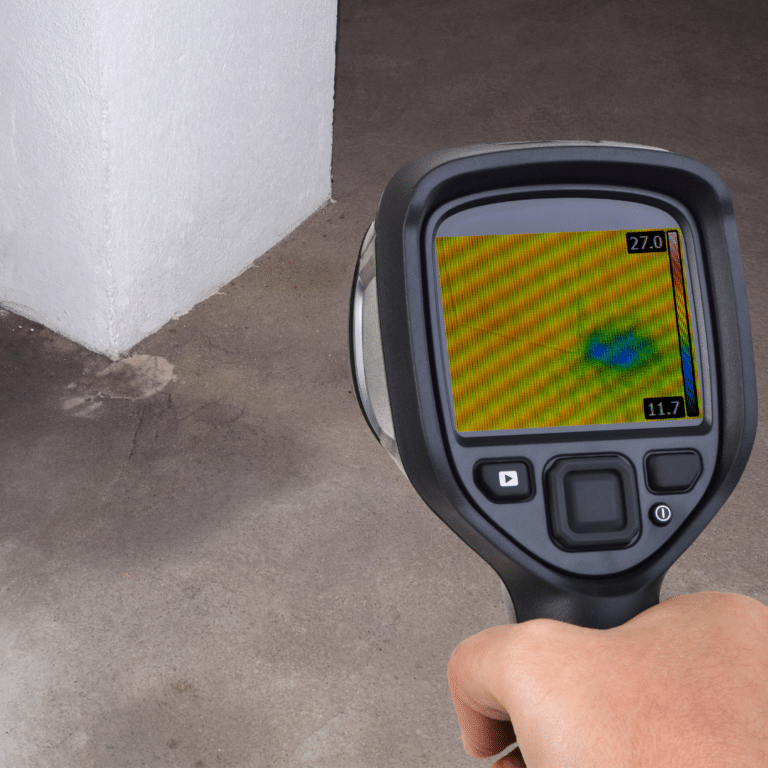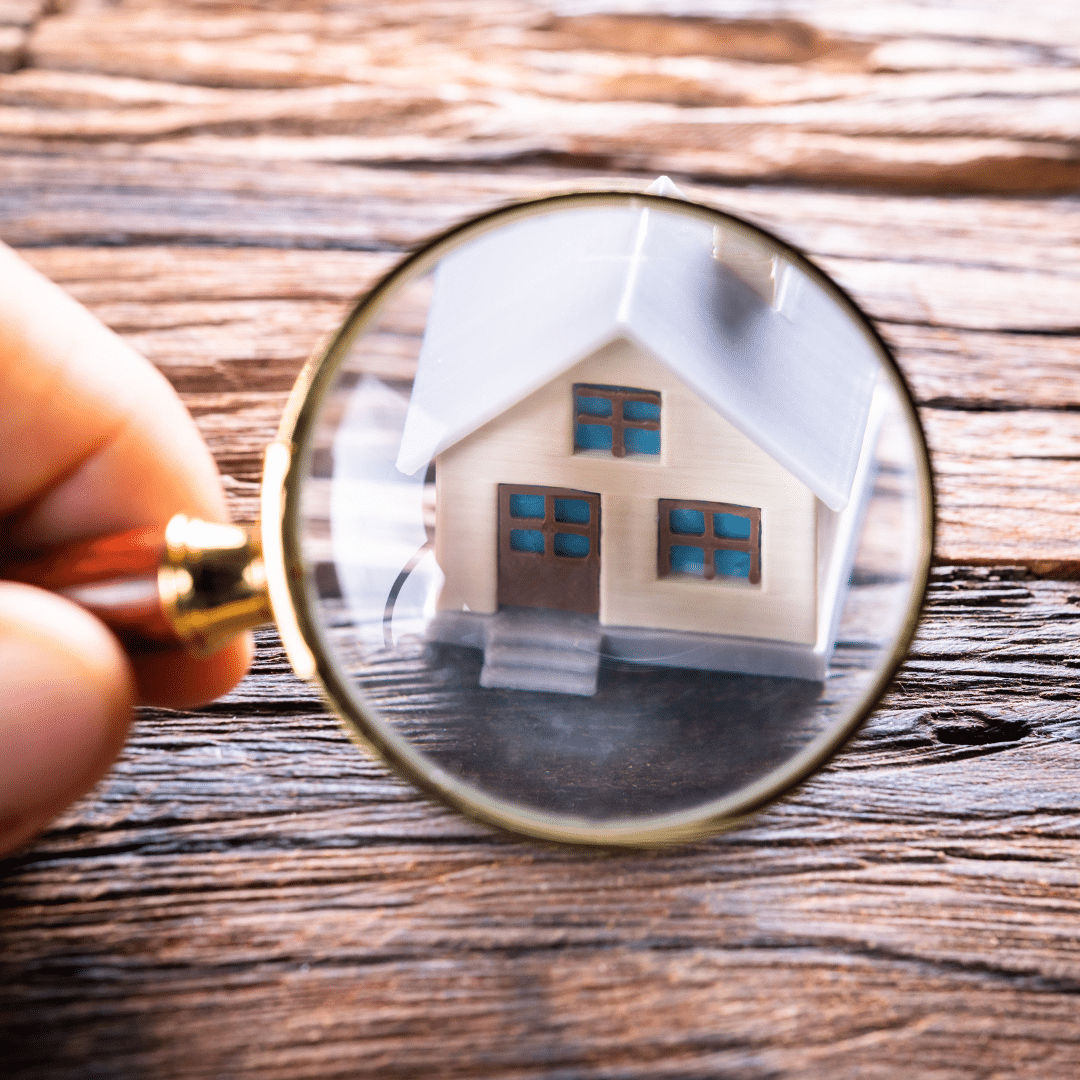Understanding the critical nature of water detection testing can mean the difference between a safe investment and a costly oversight in the home-buying process. With a focus on the specifics, such as the origins of water leaks, this article will provide essential insights into safeguarding your property.
Water detection testing is vital in identifying the presence of moisture from sources like plumbing leaks, appliance malfunctions, roofing or window leaks, condensation issues, and exterior water intrusion. It is a preventative measure to mitigate potential damage to the structure and foundation of a home.
Key Takeaways:
- Regular water detection testing can identify and prevent costly damage.
- Common leak sources include plumbing, appliances, roofs, windows, and exterior intrusion.
- Using professional inspection services ensures a thorough assessment and peace of mind.
As homeowners or prospective buyers in the vibrant Colorado Springs community, you know that staying informed is key. Keep reading to discover how water detection testing can protect your investment, maintain the integrity of your home, and provide peace of mind throughout the selling or buying journey.
The Importance of Water Detection Testing
Water detection testing is a pivotal element in home maintenance, acting as an early warning system for moisture intrusion, which can often be invisible to the naked eye. Its significance extends beyond mere detection; it is a proactive approach to safeguarding the structural integrity of a home, preserving its value, and ensuring a healthy living environment. Moisture, when left unchecked, can compromise wooden structures, corrode metals, and encourage the proliferation of mold and mildew, all of which pose serious health risks and could necessitate expensive remediation. Additionally, undetected water leaks can result in an insidious increase in utility bills as they waste water continuously.
By incorporating water detection testing into regular home inspections, homeowners can identify potential problems early on, allowing for timely repairs that circumvent larger issues, ultimately protecting their investment and well-being. It’s not just about preventing damage; it’s about ensuring a home remains a safe and nurturing space for its inhabitants.
Water Detection Testing: Key Leak Sources
Plumbing Leaks
Plumbing leaks are a major concern for homeowners, often occurring in hidden areas such as under sinks, at pipe junctions, and around water heaters. These leaks can go unnoticed for long periods, allowing for extensive and costly damage. Warning signs include unexplained spikes in water bills and the sound of running water when no taps are in use. Such leaks can not only waste significant amounts of water, leading to higher utility bills, but also cause structural damage, mold growth, and even pests. To prevent these issues, homeowners should be vigilant, regularly check known trouble spots, and address any signs of leaks promptly.
Early detection through water detection testing can save homeowners from the financial and structural woes of advanced water damage, maintaining the integrity and safety of their homes.
Appliance Malfunctions
Household appliances like washers, dishwashers, and refrigerators are common sources of water leaks. To mitigate the risk of water damage from these appliances, homeowners should regularly inspect hoses and connectors for signs of wear or damage and replace them as needed to avert leaks. The use of water detection sensors is also advised; placed in areas where appliance leaks are likely to occur, they can alert homeowners early to the presence of moisture, preventing the escalation of water damage. Such preventative strategies are crucial not only for protecting the home’s structure and personal property from water damage but also for avoiding mold growth and the subsequent health risks it poses.
By staying vigilant and adopting these simple yet effective measures, homeowners can significantly reduce the risk of water damage from appliance malfunctions.
Roofing and Window Leaks
Roof and window leaks present a stealthy hazard, often revealing themselves only after they’ve inflicted considerable damage to a home’s interior and structure. These leaks are typically due to compromised roofing materials or failing window seals, which can allow water to infiltrate during rainstorms or melting snow.
Regular seasonal maintenance, including inspections of roofing shingles, flashing, and sealant around windows, is essential to identify potential weak spots. Proactive repairs of any identified damage can forestall the pernicious effects of water ingress. Ensuring that these critical barriers remain intact is key to maintaining a home that is both dry and secure against the elements.
Condensation Issues
Condensation is a common yet frequently underestimated issue in homes. It occurs when warm, moist air contacts cooler surfaces, leading to water droplets that can slowly cause damage. If not addressed, condensation can strip the integrity of paint, causing it to bubble and peel. Wood fixtures are also at risk; prolonged exposure to moisture can cause warping and compromise structural integrity. Moreover, the persistent dampness from condensation is a prime breeding ground for mold and mildew, which pose health risks and can be costly to remediate.
To prevent these issues, homeowners should manage indoor humidity levels, perhaps using dehumidifiers, and ensure that their homes are properly ventilated, especially in areas like kitchens and bathrooms where moisture is commonly generated.
Exterior Water Intrusion
Exterior water intrusion is a serious threat to any home, often caused by inadequate drainage or compromised exterior surfaces. Proper landscaping is vital; it should slope away from the foundation to guide water runoff and prevent pooling. Gutters and downspouts are the first line of defense against roof runoff but must be kept clear of debris to function effectively. Seasonal cleaning can prevent overflows that might lead to water seeping into the home.
Additionally, sealing any visible cracks and gaps in the home’s facade with appropriate caulking or sealants is essential to block potential entry points for water. These measures collectively form a robust defense, shielding the home from water damage that can stem from external sources.
Water Detection Testing Technologies and Techniques
Advancements in water detection technology have greatly enhanced the ability to identify and address moisture issues in homes. Professional inspectors use moisture meters and infrared cameras to detect water presence non-invasively and with high precision. Moisture meters can either penetrate surfaces or scan them without damage, while infrared cameras visualize cool, damp areas indicative of moisture. DIY kits, though less comprehensive, can provide a basic level of assessment for homeowners. However, for a thorough evaluation, professional inspections are recommended as they can expertly utilize these advanced tools to ensure a home remains safe and dry.
How to Act on Water Detection Testing Results.
When water detection testing reveals moisture, swift and decisive action is essential to prevent further damage. The first step is to stop the source of the water; this may involve shutting off the main water supply or addressing the specific appliance or pipe that’s leaking. Once the flow of water is halted, the affected areas must be thoroughly dried. This could require the use of dehumidifiers, fans, or professional drying services, depending on the extent of the moisture.
The next phase is to assess and repair the damage caused by the water. This may range from minor repairs such as patching drywall to more extensive restorations like replacing flooring or addressing structural damage. Prompt repairs not only restore the home to a safe and livable state but also prevent secondary issues like mold growth and wood rot.
By taking immediate action upon detecting water, homeowners can significantly reduce the severity and cost of water damage. It’s not only about fixing what’s broken but also about protecting the home’s future integrity and the well-being of those who live there.
Securing Your Home: The Value of Expert Water Detection Testing
The five key sources of leaks underscore the necessity of regular water detection testing. By understanding and addressing these potential issues, homeowners can safeguard their property against the dangers of unchecked water damage.
If you are concerned about potential leaks in your home or are preparing to sell your property, contact First Priority Home Inspections at 719-491-1520 for a comprehensive water detection test. Our expertise can be the first step towards securing your home against water-related issues.
What is water detection testing and why is it important for my home?
Water detection testing is a process that involves identifying the presence of unwanted moisture or leaks in various areas of a home. This testing is crucial because it can uncover hidden water damage that may lead to costly repairs, structural damage, mold growth, and potential health issues if left undetected and untreated. By conducting water detection testing, homeowners can address leaks early, ensuring the longevity and safety of their home environment.









